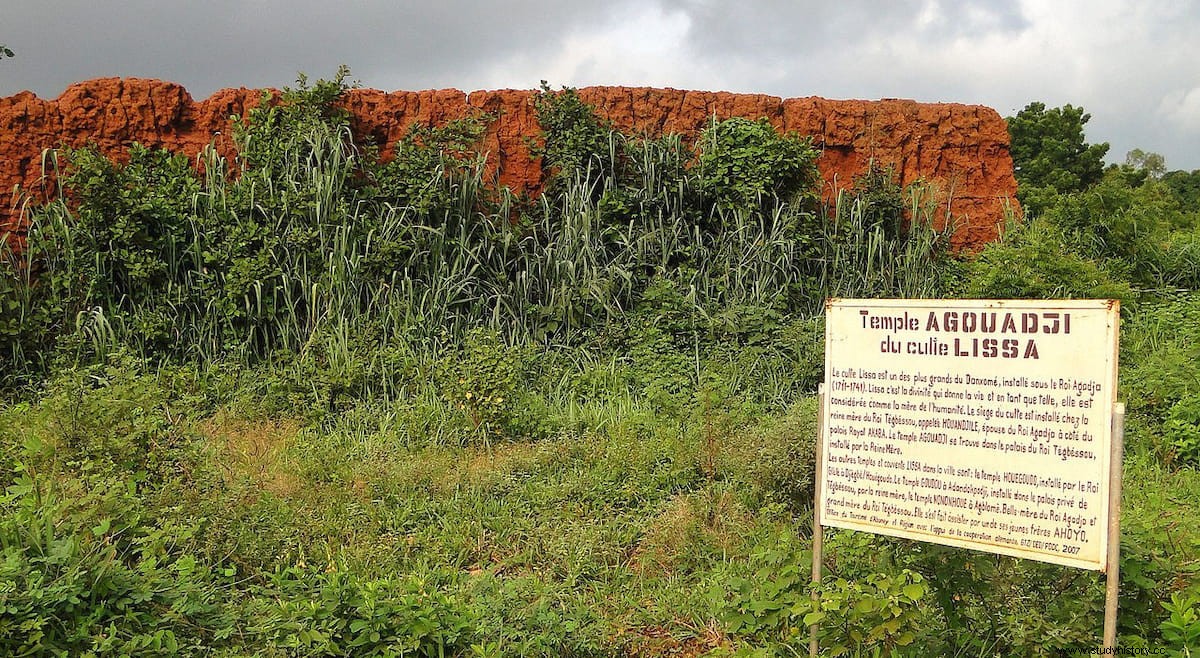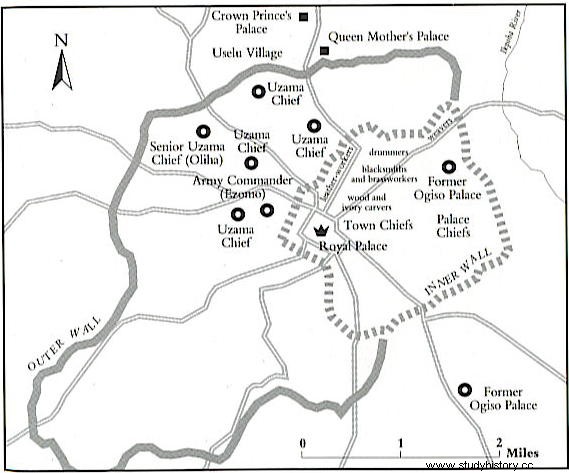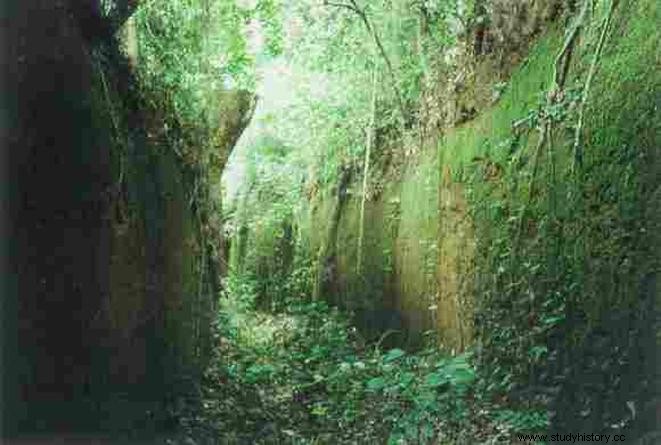The former Benin Empire was one of the states that existed in sub-Saharan West Africa before the arrival of European colonizers.
Its establishment dates back to the eleventh or twelfth century, and its existence would extend some 700 years, until it was annexed by the British Empire in 1897. It should not be confused with the current country of the same name. The Benin Empire, which its own inhabitants called Igodomigodo, was located south of what is now Nigeria , around its capital Edo (renamed Benin City by the Portuguese upon their arrival in 1485). It was not only one of the oldest states on the continent, but also one of the most developed.

The height of the empire's power began in the 15th century with Oba Ewuare, who had his palace surrounded by a 11-kilometer-long wall and a 6-meter-deep moat. Excavations carried out by Graham Connah in the 1960s also found an system of outer walls that extended up to 16,000 kilometers long, and that, according to his estimates, would have required hundreds of years to be raised. Certainly its construction had begun at the beginning of the 9th century and lasted for several centuries until the middle of the 15th.
Today these walls are considered the longest structure ever built by man (some add without mechanical means ), encompassing a territory of about 6,500 square kilometers. According to Fred Pearce in New Scientist, the walls connected more than 500 settlements of the empire, they were four times longer than the Great Wall of China (8,500 kilometers is the classic measurement of the Chinese wall, although a few years ago a new study gave the figure of 21,000 kilometers, still not verified), and to raise them a hundred times more material was used than to build the Pyramid of Cheops.

Its height varied according to the areas, reaching 20 meters around the city itself, which was accessed through nine gates. All the walls were patrolled by armed guards.
When the Portuguese discovered this city in 1485 they were amazed by the immensity of a kingdom made up of hundreds of cities and towns interconnected by walls in the middle of the jungle, with wide streets and even public lighting. And it is that the City of Benin had a lighting system , especially in the streets near the palace, with metal lamps powered by palm oil.

In 1691 Captain Lourenco Pinto wrote that the Great City of Benin is bigger than Lisbon, all the streets are straight and long as far as the eye can see. The houses are large, especially that of the king, which is decorated with rich and fine columns. The city is so rich and industrious and so well governed that theft does not exist, and its inhabitants feel so safe that they do not have doors in their houses .
According to mathematician Ron Eglash, both the city and the surrounding villages had been planned using a mathematical pattern and forming perfect fractals.

The walls of Benin were partially destroyed by the Punitive Expedition of the British in 1897, which devastated the city, ended the empire and swelled the collections of English museums with numerous pieces of local art. Today, scattered canvases of what was one of the greatest archaeological phenomena on the planet remain standing, and many of its parts have been reused by the local population.
